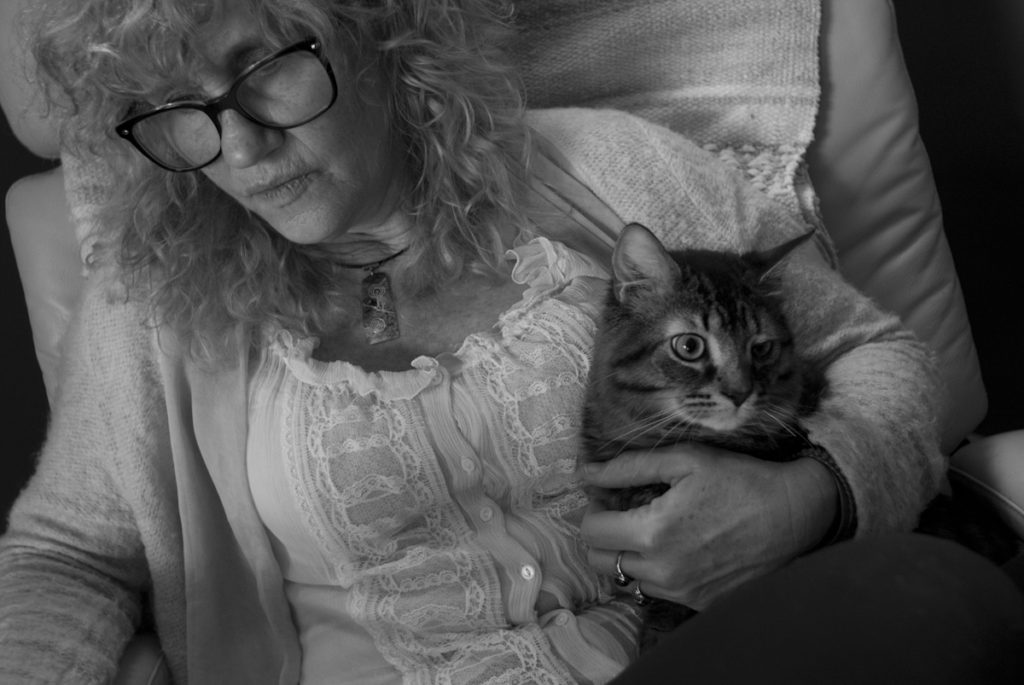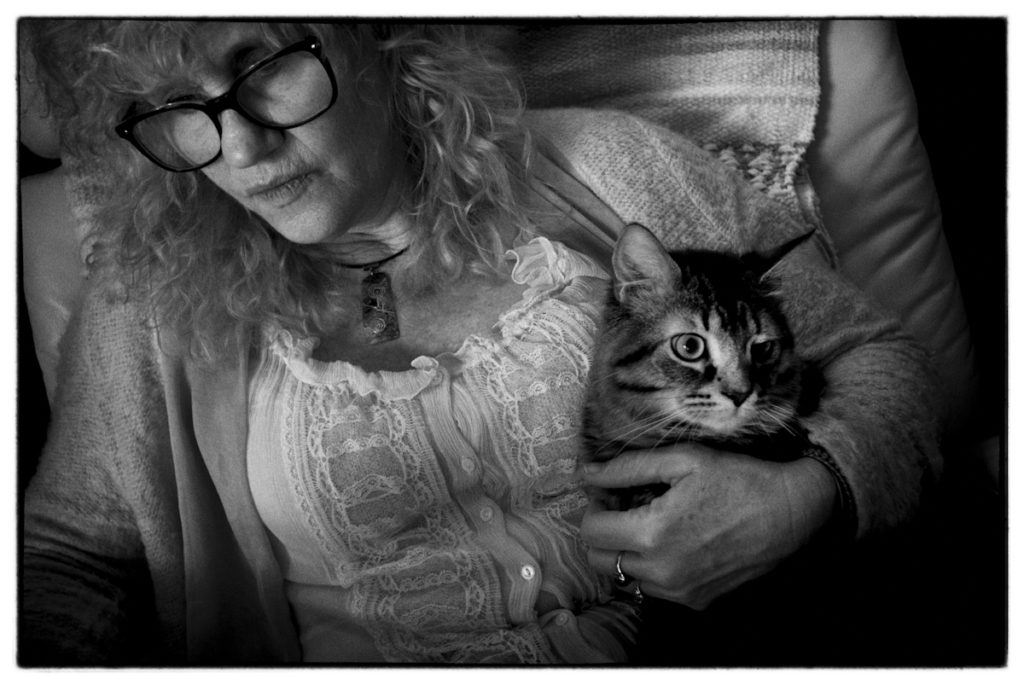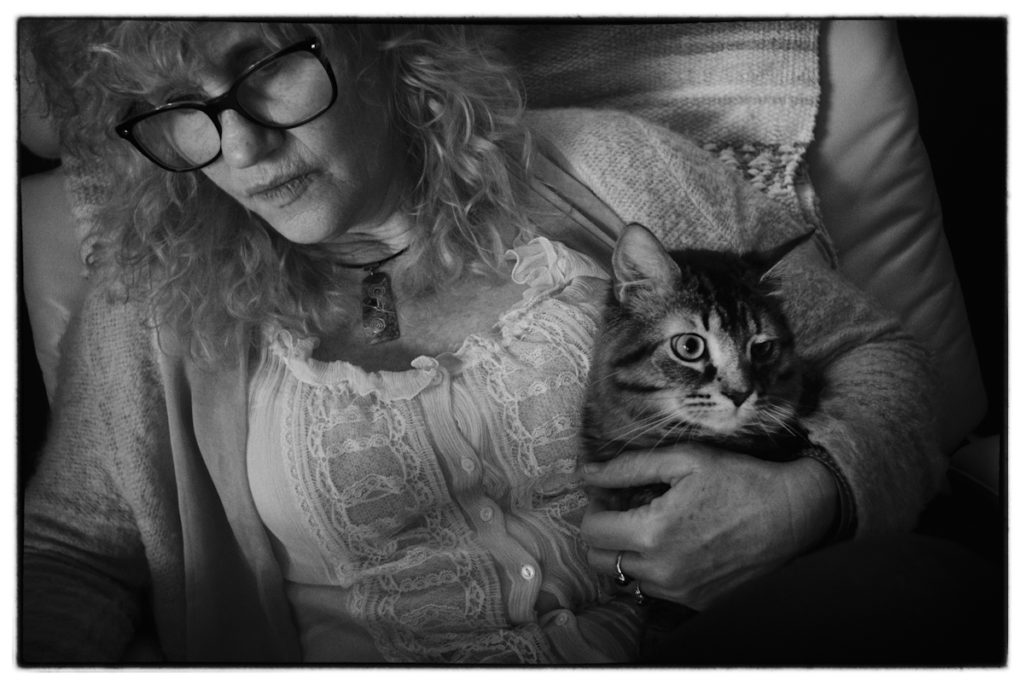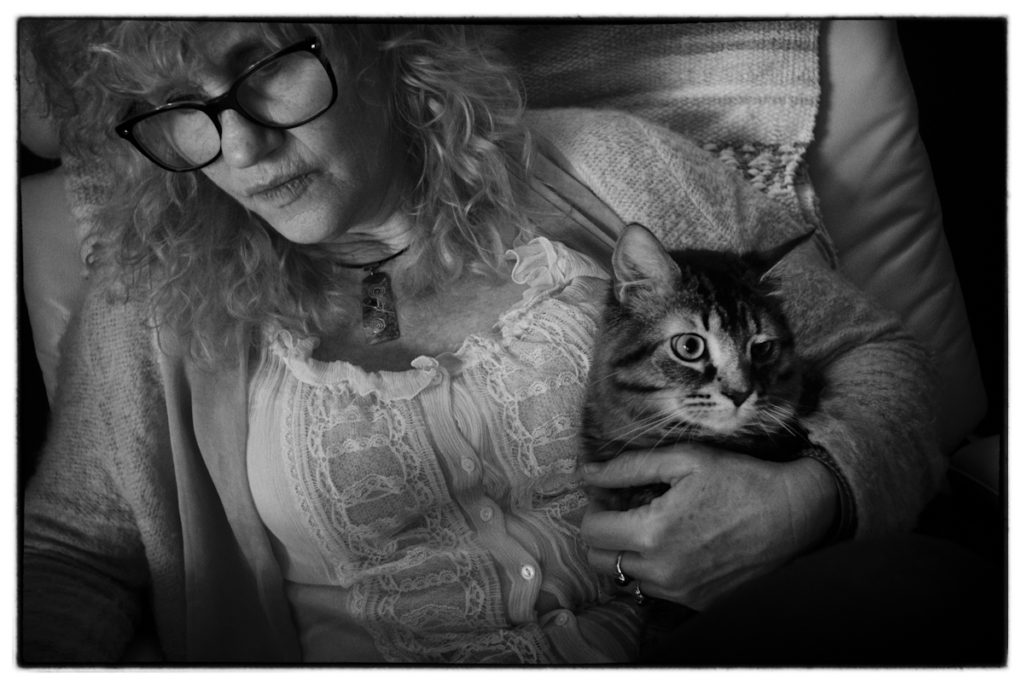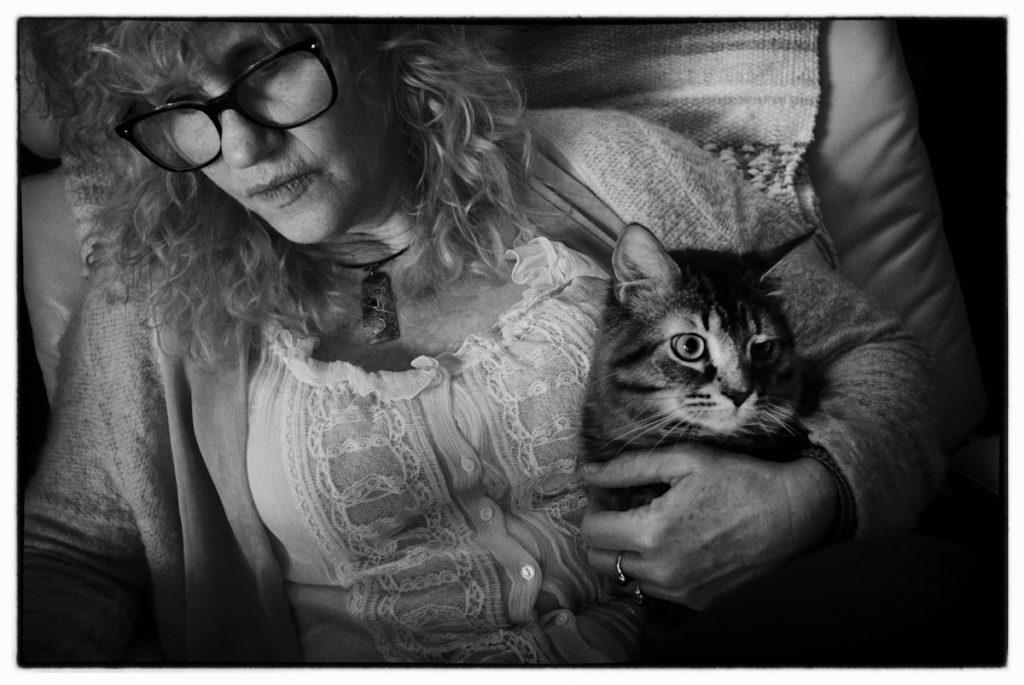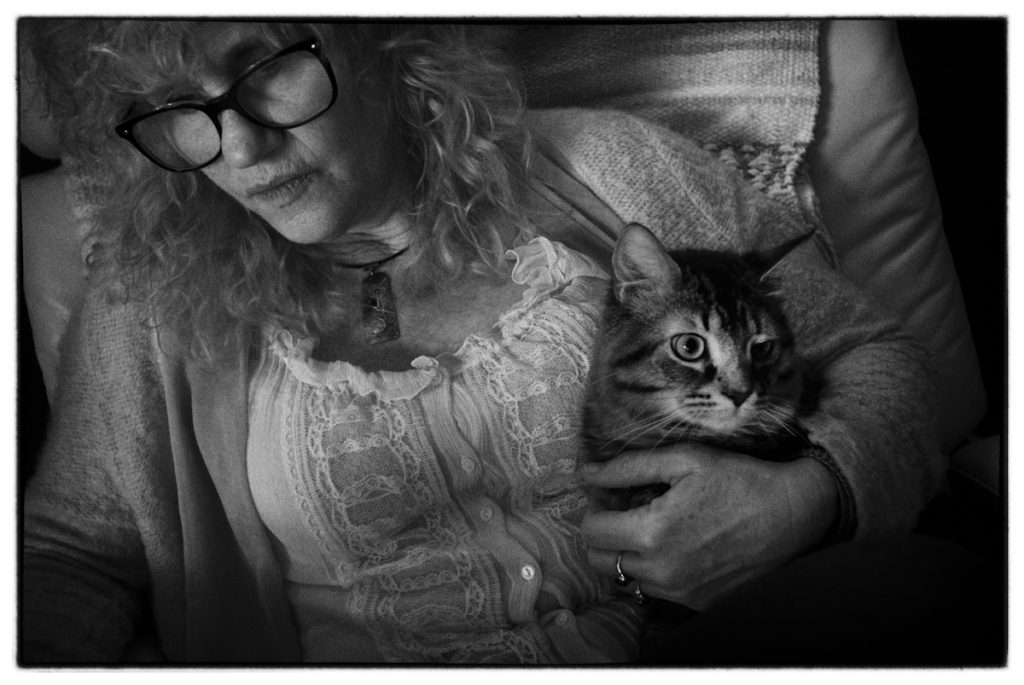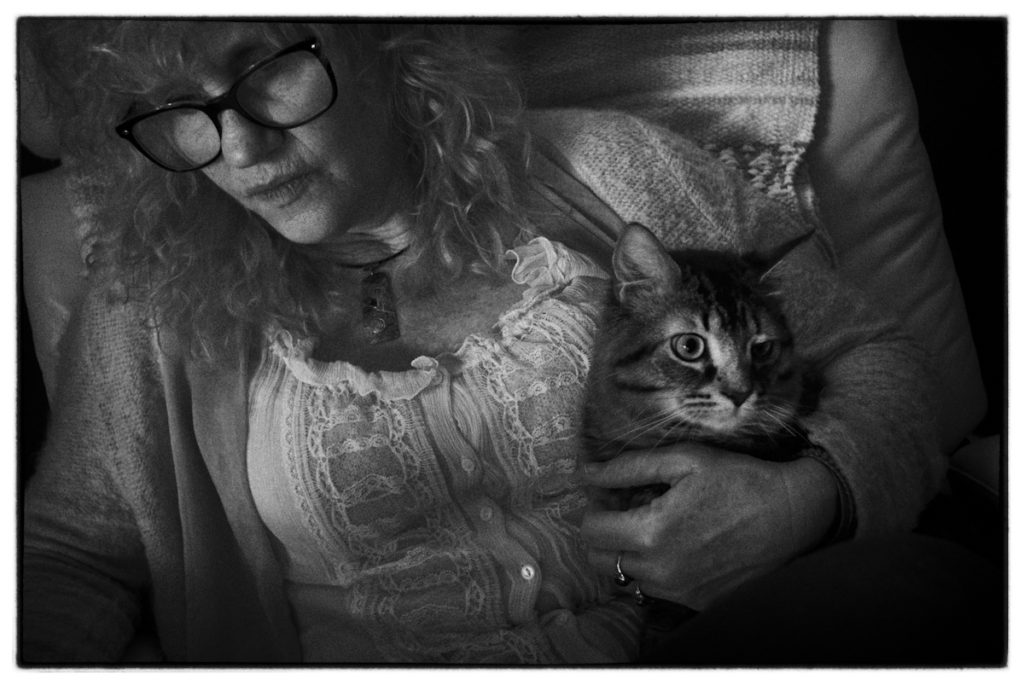Wally Enjoying some Quality Time with the Wife – From a Fuji S5 Raw File
While I generally dislike almost everything about digital photography, one of the few things I’ve grown to love about it, as a matter of practical adaptation, is its versatility. (My dad would refer to this as “making chicken salad from chicken shit.”) You can start with a RAW file and create any variant of end result you prefer – color, B&W, sepia etc.
An old B&W film guy, I tend to remain one digitally, which means B&W output, which means, at the least, greyscaling RAW files. Unfortunately, simply greyscaling RAW files without more leaves you with what to me look like thin, plasticky photos that scream digital capture. Nothing wrong with that, I guess, if you like that look, but I think digital B&W looks like shit when compared to a good B&W negative wet-printed or scanned. It’s why the Leica MM Monchrom, a great idea in theory, never really interested me. You could argue that it instead of being a throwback to traditional B&W photography, it actually produces files that accentuate the worst aspects of digital B&W.
Enter “film emulation” software, which, surprisingly enough, attempts to take a digitally captured RAW file and create an end result that emulates the look you’d get were it to have been taken with a given film stock. Nik Silver Efex is the best example. Nik (now defunct) extensively researched the looks of various film stocks and produced algorithms that best mimicked the printed result of these films. Unlike what various self-appointed digital experts who give advice about the software seem to think, it isn’t simply a matter of applying an overlay of grain typical of a given film, but rather additionally, and much more importantly, replicating the characteristic exposure curve of a given film.
A Simple Greyscale. No Grain, No Film Exposure Curve Applied
 What a lot of digital era photographers don’t seem to understand is that film captures light in a manner different from a digital sensor. A sensor doesn’t have an exposure curve; it captures light in a consistent linear fashion. Its “exposure curve,” if you could call it that, looks like a straight line ( see over there). What that means practically, is that, for example, if the light in one part of the photo is 4X the amount of light in another part of the photo, it will faithfully be recorded in such proportions by a sensor.
What a lot of digital era photographers don’t seem to understand is that film captures light in a manner different from a digital sensor. A sensor doesn’t have an exposure curve; it captures light in a consistent linear fashion. Its “exposure curve,” if you could call it that, looks like a straight line ( see over there). What that means practically, is that, for example, if the light in one part of the photo is 4X the amount of light in another part of the photo, it will faithfully be recorded in such proportions by a sensor.
Film meanwhile, doesn’t respond to light in this 1 to 1 fashion; rather, it does so idiosyncratically i.e. in its own individual way. This, much more so than simply the grain of a film, is what defines its specific character -what sets Tri-X apart (see to right) from HP5 for example. Typically, what happens with film is this: it’s less sensitive to low levels of light while being better able to reproduce highlights (as opposed to being “more sensitive” to highlights). Digital sensors tend to blow out highlights while film tends to compress highlight values and thus retain detail in strongly lit areas. The end result, generally speaking, is more nuance in the digital shadow detail and deeper blacks and more highlight detail with film.
This, much more so than simply the grain of a film, is what defines its specific character -what sets Tri-X apart (see to right) from HP5 for example. Typically, what happens with film is this: it’s less sensitive to low levels of light while being better able to reproduce highlights (as opposed to being “more sensitive” to highlights). Digital sensors tend to blow out highlights while film tends to compress highlight values and thus retain detail in strongly lit areas. The end result, generally speaking, is more nuance in the digital shadow detail and deeper blacks and more highlight detail with film.
And this is where emulation software runs into problems, because it’s necessarily working with a digital file to begin with, which means that it’s working with a file whose inherent highlights have already been compromised to some extent, and no amount of emulation can recreate highlight information that would be there on a film negative but’s that’s not contained in a digital file.
*************
Tri-X ASA 400
So, we’ve established that film emulation software, while really cool, isn’t completely accurate. At best, it ‘mimics’ the look of film. In any event, I prefer its compromises to the unedited look of greyscaled digital.
Below are the Nik emulations of a number of traditional film stocks. To my eye, some are better than others in recreating the native look of the film: Plus-X, HP5, Fuji Neopan 1600. The Tri-X emulation doesn’t work for me, and I think that’s a result of TRi-X’s contrastiness coupled with its ability to preserve highlight detail, an ability compromised when ’emulated’ by the native limitations imposed on software working with digital files as noted above.
And yes, Wally is an adorable cat, a seven-month-old Maine Coon Cat we found at the ASPCA shelter. Boy’s got a personality, sweet as can be. There’s plenty just like him at animal shelters everywhere. Do them, and you, a favor and go take one home. Best thing you’ll ever do.


